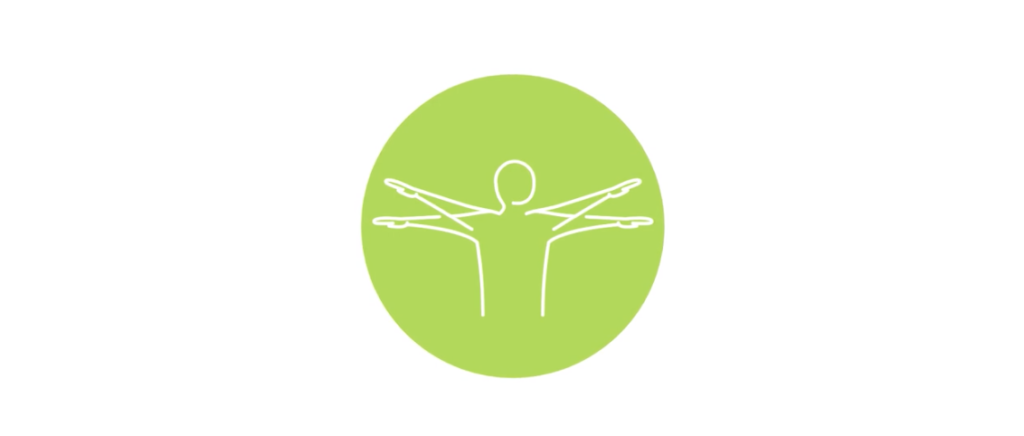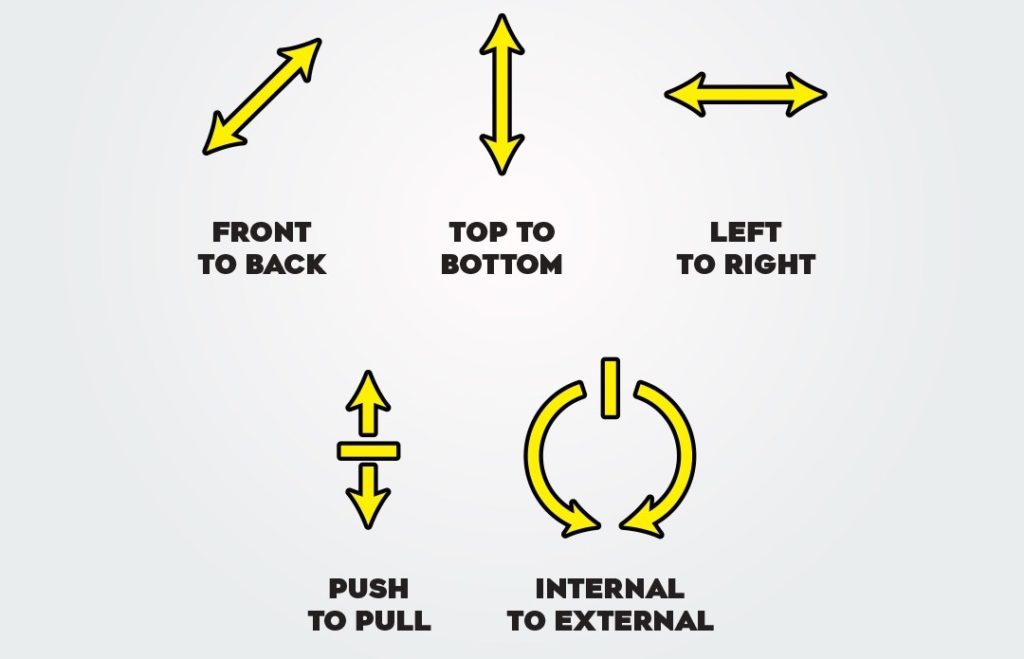
Written by Kim Leggett (Clean Health Online Master Coach)
Achieving ‘optimum STRUCTURAL BALANCE’ may not sound as great as ‘building boulder shoulders’ or ‘shedding 10kg of body fat’, but it is a highly important part of achieving either of these goals, and takes even more significance for anyone who coaches athletes of a competitive sport!
Your client may have ‘big’ muscles, but if the stabilisers that support then are WEAK – what do you think will happen?
INJURY, poor performance and frustration.
Focus on large muscle groups AND the muscles that enable them to FIRE properly. By doing this, it is guaranteed your client will see greater results both in and out of the gym.

We go even more in-depth about structural balance and its effect on client results, health & performance in our Strength System International Certification online courses! Click here to get certified.
So what is Structural Balance?
Structural balance is basically the strength and muscle mass that is evenly distributed from:
- Front to back
- Top to bottom
- Left to right
- Push to pull
- Internal to external rotation
This means that the entire body is BALANCED as a whole and around each individual joint and body segment.This is a concept coined by Charles Poliquin who helped world class athletes reach and surpass their optimal performance.
The human body however will never be completely balance, similarly as our lifting technique will never be perfect – but these are still things we can aim for whilst working towards structural balance and perfect technique.

Who benefits from structural balance training?
Anyone!
A training plan which builds a structurally balanced physique will help anyone from a general population client all the way up to the strongest man in the world.
A general population client will probably come to you with many imbalances and potentially a history of injuries. The majority of these injuries stemming from muscle imbalances and to fix these, we need to FIX THE IMBALANCE. Without doing this diligently long term – this client will guaranteed resort to their old ways of training and re-injure themselves.
As a coach, understanding this approach to training will help improve training outcomes, reduce the risk of injury and provide you with the tools to treat and prevent imbalances to help your clients improve their strength and create a more aesthetically pleasing physique which is free from injury and moves well under load. In other words, you can help clients with a variety of different goals.
Whether the goal be strength and performance, aesthetic or rehabilitation – your client will benefit from structural balance.
Strength/Performance Goals:
In order to better understand how structural balance benefits this goal we need to get our head around the fundamental principles in physics and biomechanics. The forces acting on an object can add to each other, if they’re acting in the same or similar directions, or they can compete with each other, if they’re acting in opposing directions. When we pump iron, the aim is for the sum of all of our forces that our muscles produce in a particular direction to be greater than the weight on the bar so that we can move it from point A to point B.
In any exercise, we have our prime movers, our agonists, which are the main muscles use to complete the movement, and generally these are the muscles that acts with the most direct line of force in the direction that we want the weight to be moving. Although these contribute a large proportion of the total force in the movement, they are not the only muscles working to move the weight.
Human movement is dynamic, and we have other muscles that will contribute at various points of the exercise as synergists, other muscles contributing to a lesser degree to the movement, antagonists, which are opposing muscles, that relaxed to allow movement to occur, or stabilizers muscles that co-contract around the joint to prevent or limit movement occurring at that joint.
Our lifting technique will naturally gravitate towards using the strongest muscles, so if we neglect training the other supporting muscle groups, then our technique can shift away from what is biomechanically optimal. Our training can plateau and our strength will suffer.
By strengthening the SUPPORTING muscle groups, we are able to produce GREATER total force to lift the load.
Aesthetic Goals:
Bodybuilders NEED a balanced physique to do well in competitions, needless to say, if you are stepping on stage or not – a balanced physique looks good. An important factor in training for structural balance is prioritising good movement patterns and optimising postural muscles. Having good posture will translate into you looking fitter and move better. This is a key reason why it is recommended that female clients should train their upper body.
Rehabilitation Health Goals:
Our bodies have evolved for our muscles to contract in a particular way around joints, and when this balance is thrown off, then our connective tissue ends up getting loaded in ways that it’s not designed for. When you add an extra loads with a barbell and multiple reps, sets and sessions performing a movement, it’s easy to see how muscle imbalances can lead to training injuries.
Structural balance training is not specific to rehab, but this type of approach will drastically IMPROVE the long term outcomes of any injury rehabilitation, as well as prevent a lot of injuries or pains from occurring in the first place.
Now that you have an understanding how what strucutral balance is and who can benefit from it, here are some key areas of both the upper and lower body which are areas of potential structural IMBALANCE:
When breaking down lower body training we can think of it in terms of hip dominant and knee dominant movement patterns. For example, with squats, depending on whether your client is more knee or more hip dominant will mean they may be working one area of their lower body slightly more than another despite squats being a well rounded lower body developer.
1. Weak VMO:
The VMO or vastus medalis is the tear drop shaped quad muscle on the inside of your knee and is essential to maintain the correct tracking of your knee as your move. Females are noted as having weak VMOs due to their biomechanical structure (a wider pelvis and and inferior Q angle) and suffer four time as many ACL injuries as men and therefore need to ensure they are squatting with proper technique with full range of motion – DEEP AND BELOW PARALLEL.
2. Weak Hamstrings:
Although the squat is an excellent all round low body developer, it neglects directly working the hamstrings, so we need to make sure we are including supplementary exercises that work the hamstring directly through both knee flection and hip extension exercises to compliment our squat training. A weakness in the hamstring can result in overcompensation injuries in the quadriceps or glutes, or pulled/torn hamstring muscles themselves.
When we look at the upper body – training should follow three guidelines regardless of whether the goal is performance, aesthetics or purely health. To ensure a successful outcome, you should use a PUSH – PULL RATIO OF 1:1.
This ratio refers to the number of sets you do for upper body pushing and pulling movements within each training week.
3. Weak Scapular Retractors:
Strengthen the stabilizers of the scapula.
The main joint of the shoulder joint, the glenohumeral joint, is a ball and socket joint, and the socket part of the joint arises from the scapula bone. This means that whatever movement is happening with our arm bone, the humerus, has to work synergistically with whatever is happening at the scapula, because if we move our arm, we are moving the ball within the socket joint, and if there is instability and unwanted movement in our scapula when we perform the arm movements, it can create problems at our shoulder joint. If we neglect to train these scapula stabilizing muscles, but continue to push big weights with our upper bodies, pain or injury are likely to occur.
4. Weak External Rotation:
Even if you follow a Push-Pull Ratio of 1:1, this in itself creates a small imbalance. The external rotators comprise of the teres minor and the infraspinatus muscles of the rotator cuff. They are crucially important for stabilising the shoulder in all forms of throwing and pressing movements. Before every upper body session (that includes any pressing work) ensure that the external rotators are strengthened to negate any imbalance caused from internal rotation.
We’ve discussed both the upper and lower body, but it is also important to make sure that there is structural balance from LEFT TO RIGHT and that we strengthen BOTH sides.
Most people are either left or right handed, and if you get someone who’s left handed to write something with their right, then they’ll probably not do a very good job at it. Imbalances exists, and not only can they be harmless in some cases, but sometimes if we try and correct these imbalances, we might be doing more harm than good. We only need consider correcting imbalances from left to right, is if they are causing pain, causing discomfort, or they are detrimental to the performance of the individual.
Make sure that you also strengthen BOTH sides of the body from left to right by including different dumbbell variations , perform bilateral and unilateral exercises for symmetry.
Structural balance is extremely important no matter what the clients goal may be and including this in your programming will ensure that they not only develop a well rounded physique but a physique that moves well and is physically robust and strong!
References:
- Poliquin, C. (1999). Achieving Structural Balance. Retrieved from: https://www.t-nation.com/training/achieving-structural-balance
- Oreb, Sebastian. (2020). Strength Systems International Certification Level 1. Clean Health Fitness Institute.






